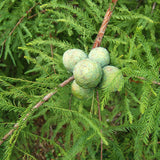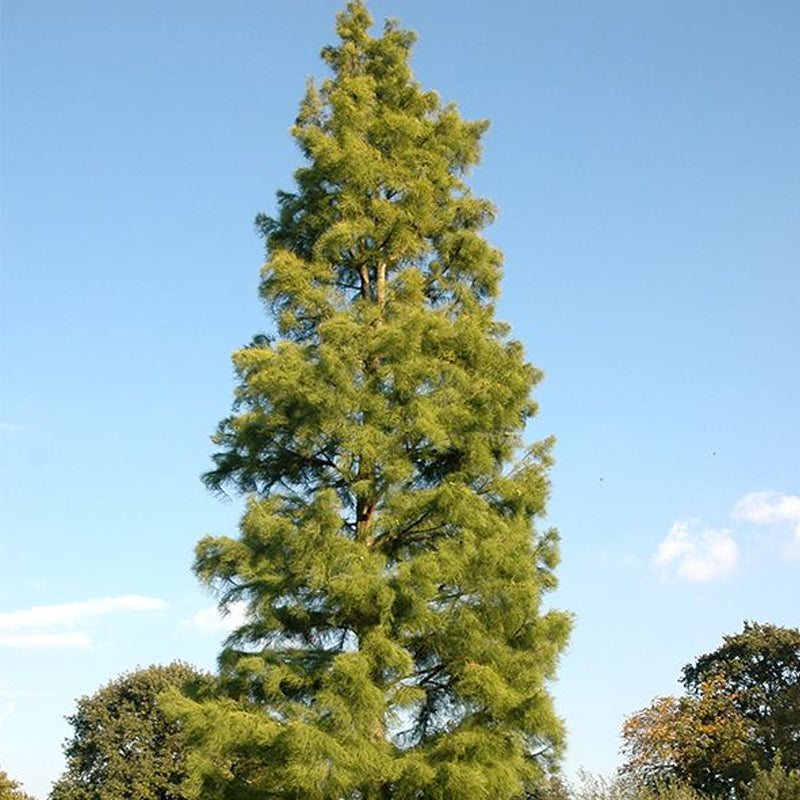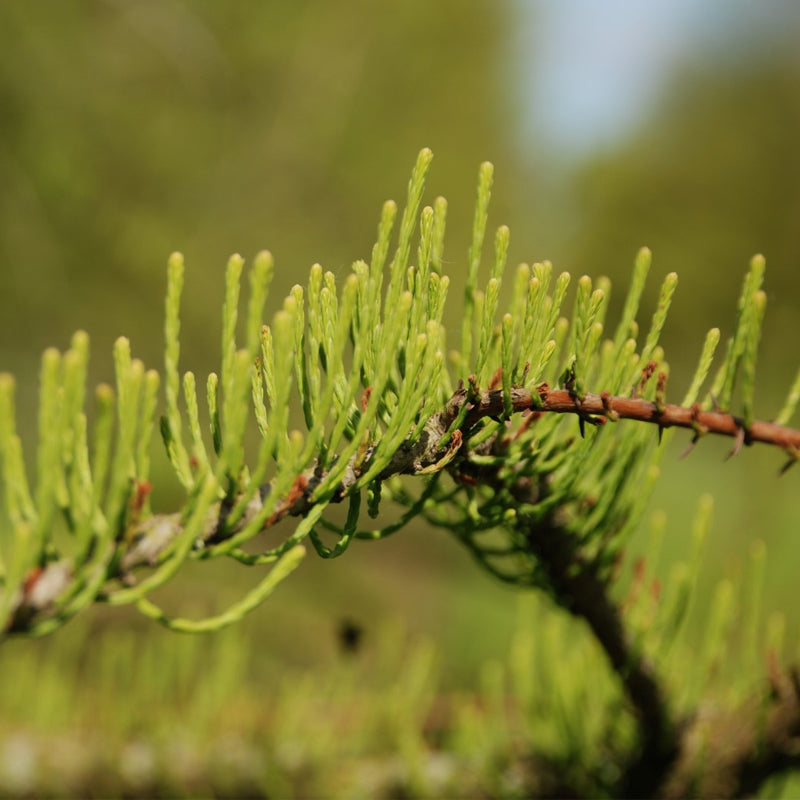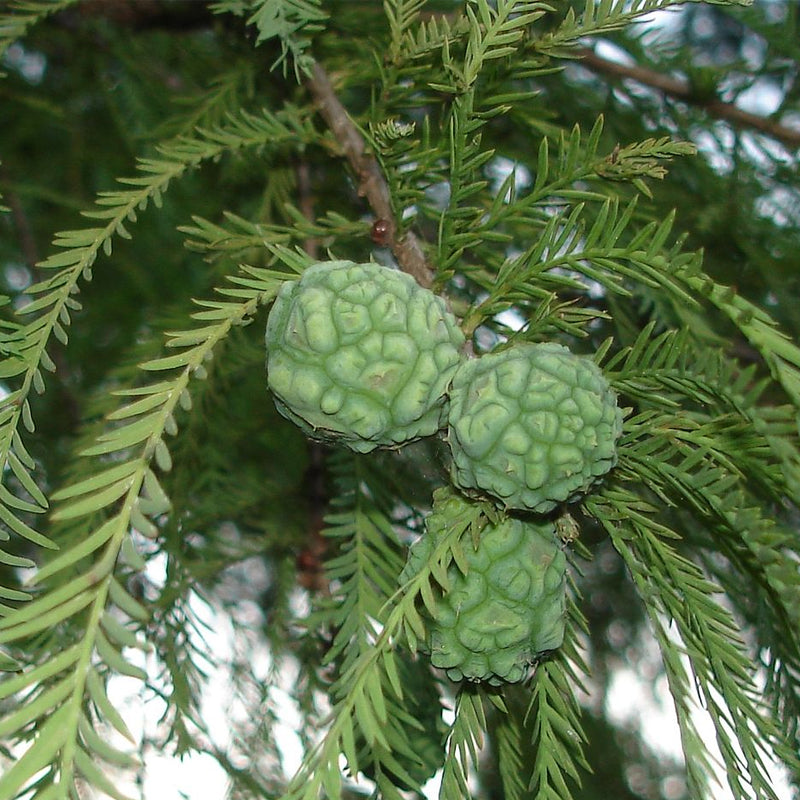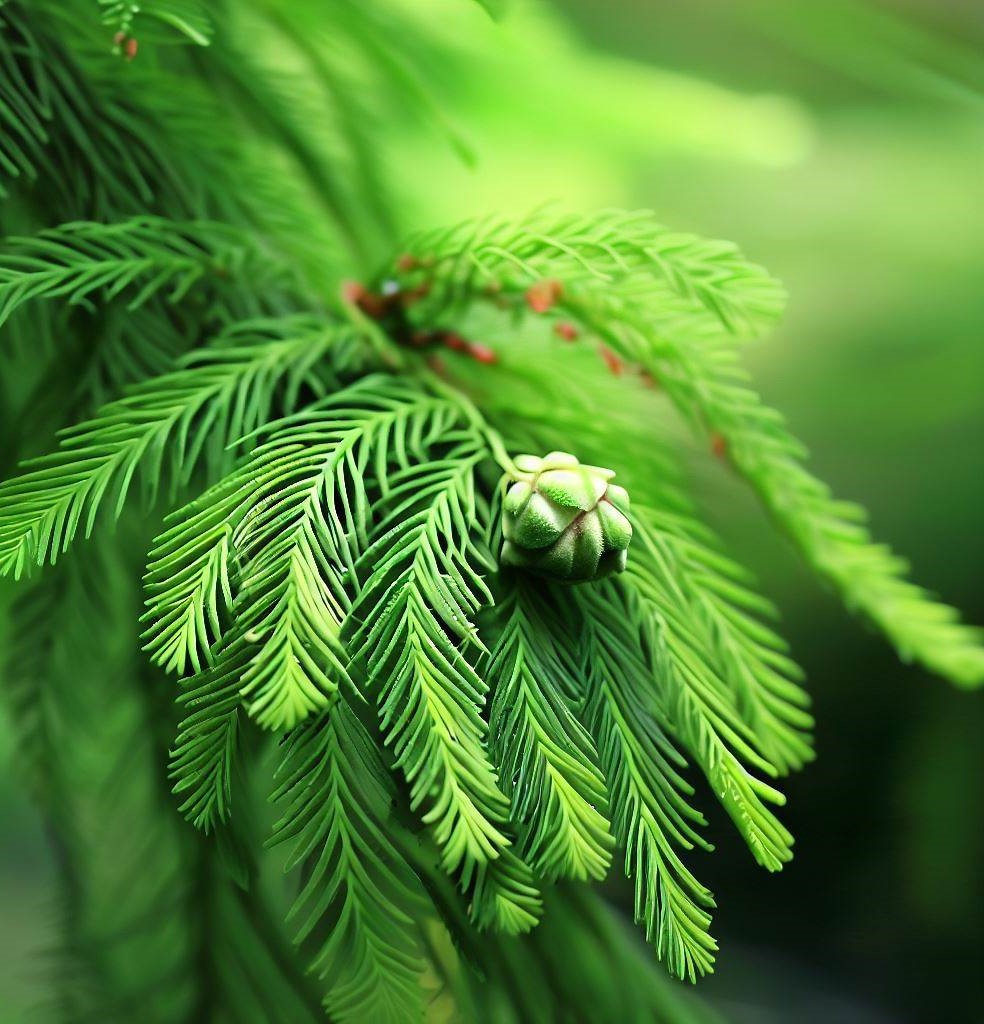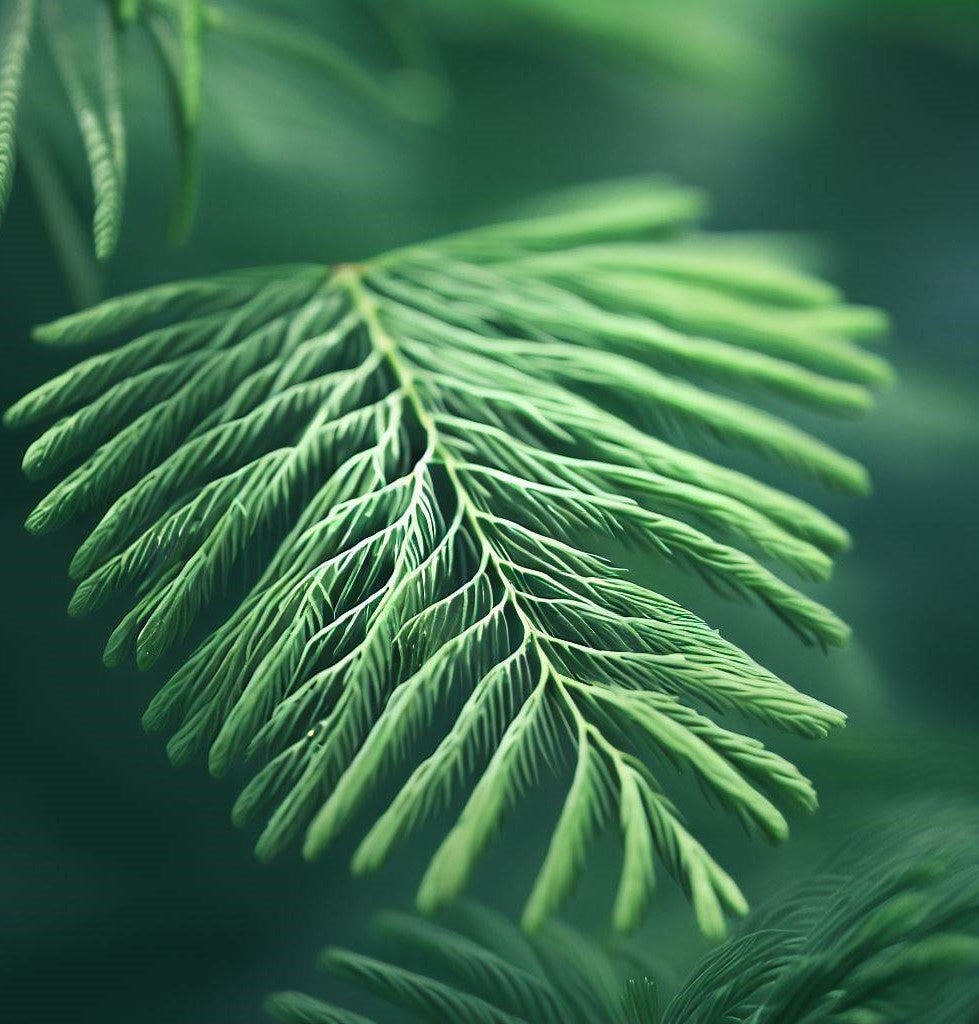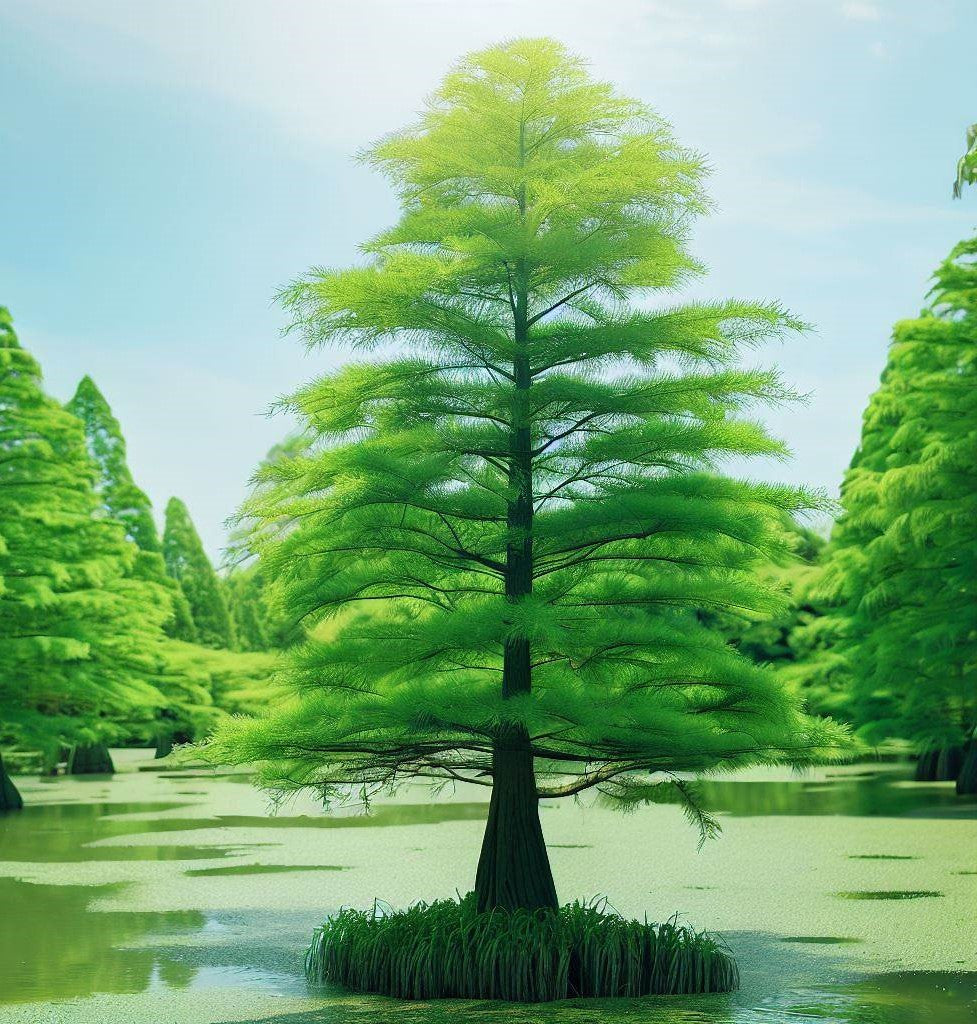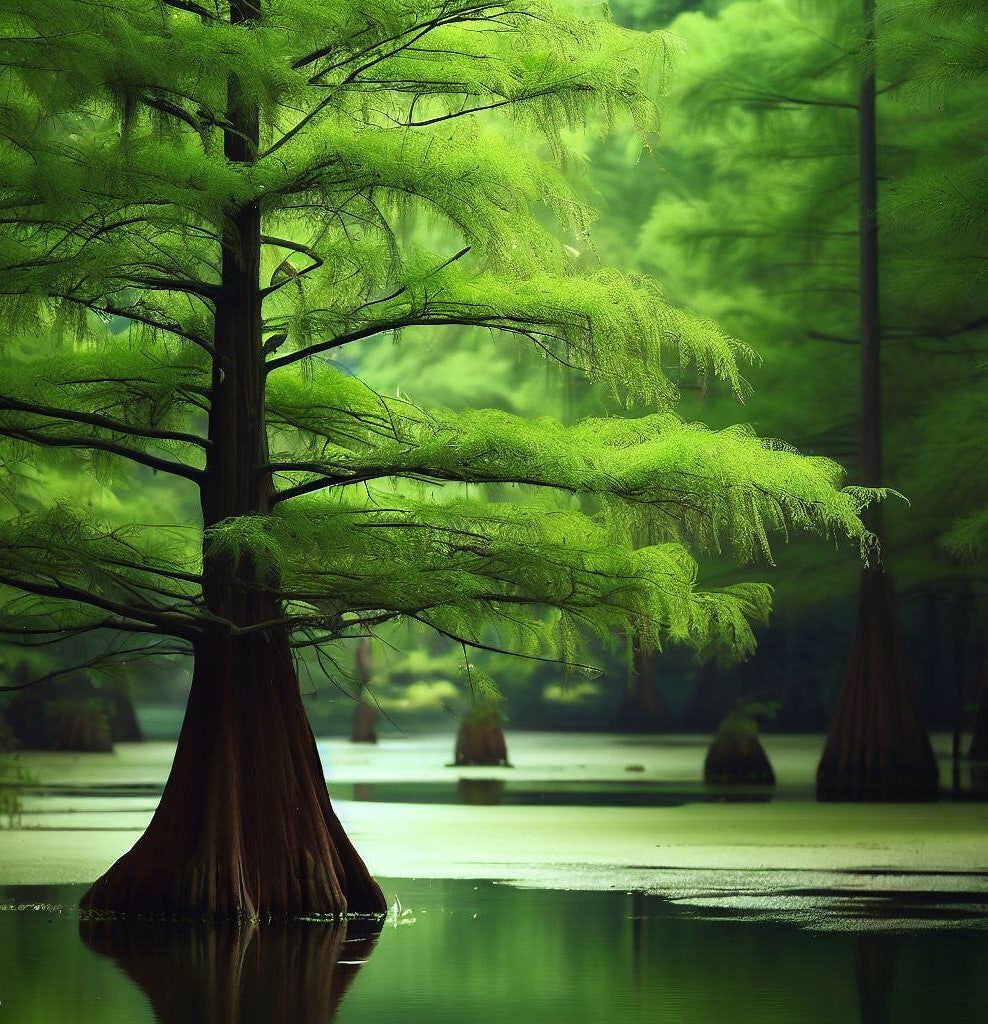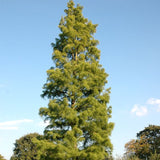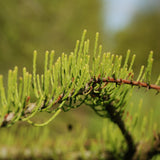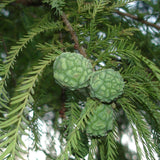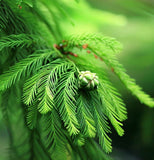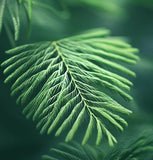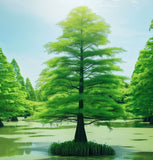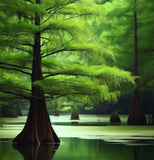Taxodium distichum imbricatum (Pond Cypress)
Taxodium distichum imbricatum (Pond Cypress) is a variety of the species Taxodium distichum, or Bald Cypress. It is a deciduous coniferous tree native to the southeastern United States, specifically found in wetland habitats such as swamps, ponds, and floodplains.
Appearance: Pond Cypress is a medium-sized to large tree, typically growing to a height of 40 to 70 feet (12 to 21 meters). It has a slender, conical shape when young, eventually developing a more broadly pyramidal or columnar crown as it matures. The tree has feathery, needle-like leaves that are arranged in flat sprays. The leaves are a vibrant green color during the growing season and turn a rich reddish-brown or orange-brown before they shed in the fall.
Adaptation to Wetland Environments: Like its relative, the Bald Cypress, Pond Cypress is well-adapted to thrive in wetland environments. It can tolerate both flooded conditions and drier periods. Pond Cypress is often found growing in shallow water or on the edges of ponds and swamps, where it contributes to the unique ecology of these habitats.
Bark and Trunk: The bark of Pond Cypress is reddish-brown or gray-brown in color and becomes deeply furrowed with age. The trunk often develops interesting buttresses, which provide stability in swampy soil.
Cones and Reproduction: Pond Cypress produces small, rounded cones that are about 1 inch (2.5 centimeters) in diameter. The cones mature in the fall and release winged seeds, which are dispersed by the wind. This reproduction mechanism allows the tree to colonize new areas.
Longevity: Pond Cypress is known for its longevity and can live for several hundred years. Some individuals have been recorded to be over 1,500 years old, making them some of the oldest trees in North America.
Environmental Benefits: Pond Cypress, like the Bald Cypress, provides several environmental benefits. Its dense foliage provides shade and can help cool surrounding areas. The tree also acts as a natural filter, trapping sediment and improving water quality in wetland habitats. Pond Cypress provides habitat and food sources for various wildlife species, contributing to the biodiversity of wetland ecosystems.
When considering planting a Pond Cypress, it is important to ensure that it is suitable for your specific climate and growing conditions. It thrives in full sun to partial shade and prefers moist or wet soil. While it can tolerate periodic flooding, it is important to avoid planting it in areas prone to prolonged waterlogging. With its elegant form, attractive foliage, and adaptation to wetland environments, Pond Cypress can be a valuable addition to landscapes and wetland restoration projects, providing both beauty and ecological benefits.
Botanical Name : Taxodium distichum imbricatum
Common Name : Pond Cypress
Height : 50- 60 ft
Spread : 25- 30 ft
Germination Info : Seed requires 60-90 days cold moist stratification
Hardiness zone : 6-9
Average seed per ounce : Approx. 250

